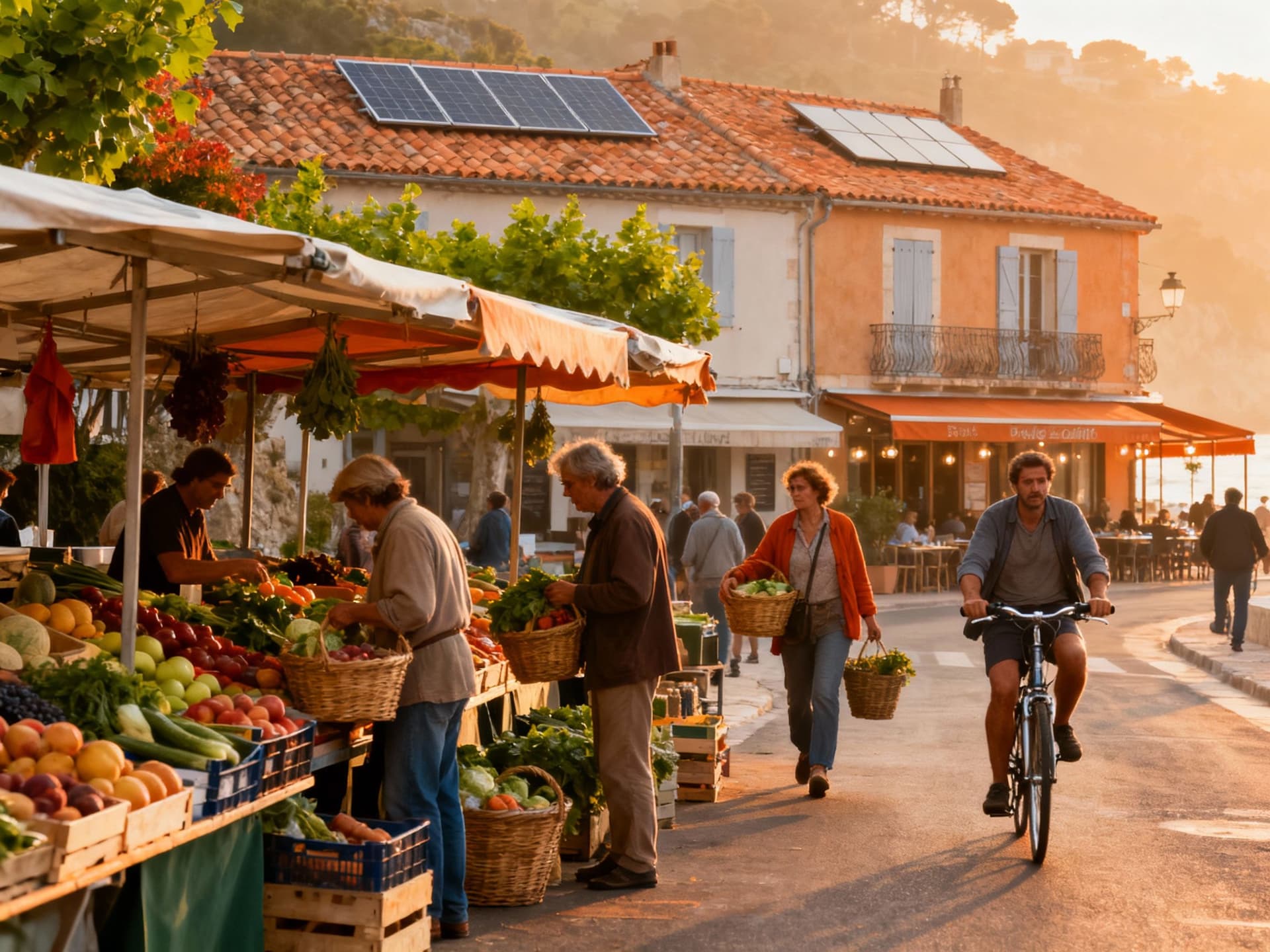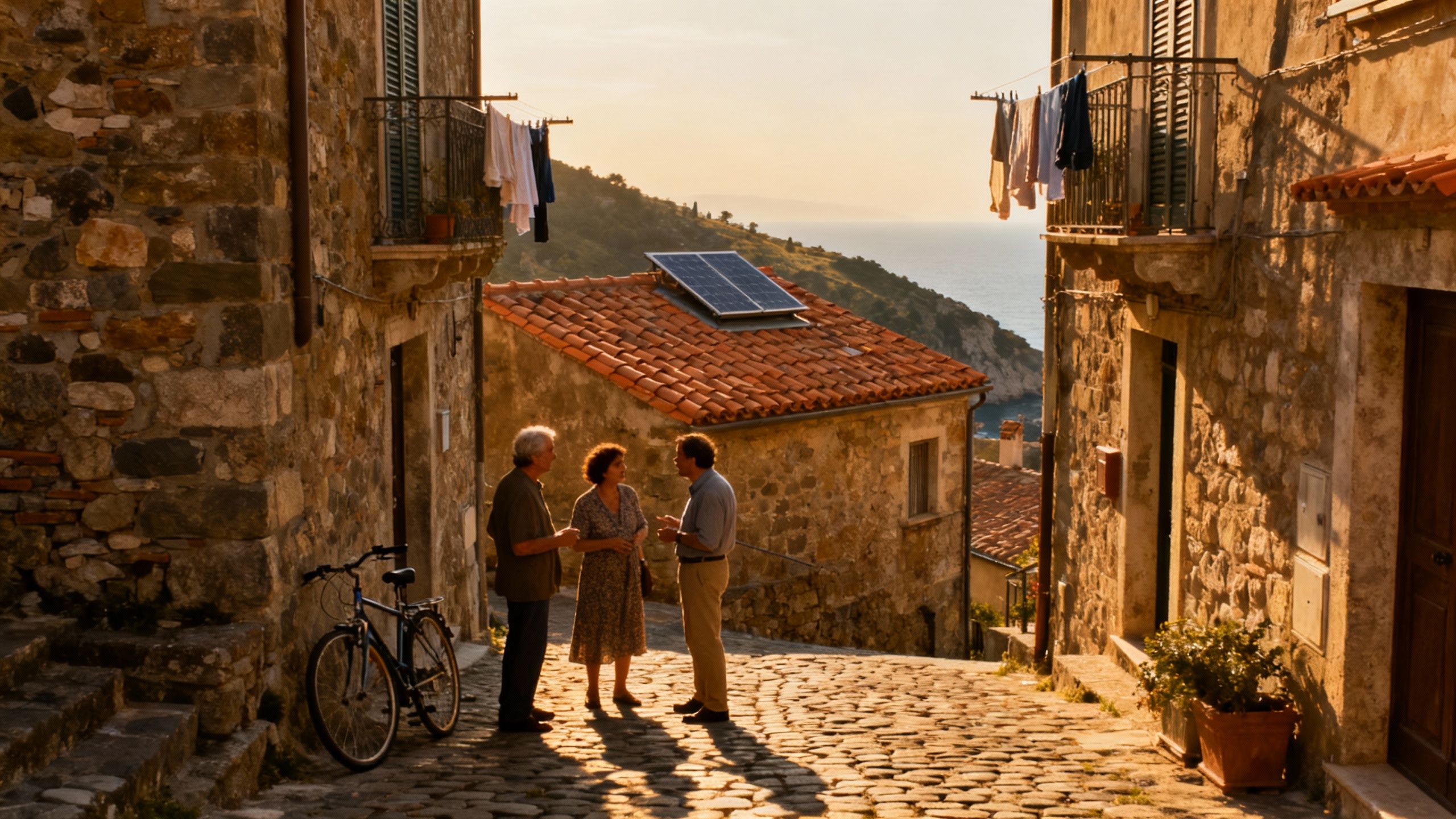When France's Green Grid Lowers Your Cost of Homeownership
Across France, growing solar, community energy and regional renewables lower household costs and change where life feels best — choose homes for orientation, DPE and local co‑ops.
Imagine waking before dawn, stepping out onto a stone terrace in a small French village — lavender trays, the hiss of a nearby solar inverter at work, and the market’s first vendors setting up beneath plane trees. In many parts of France today, that gentle morning is powered by a quietly modern grid: a mix of solar, wind, hydro and community energy projects that lower running costs and let homes feel rooted in place. For international buyers drawn to nature, this is the surprise: green infrastructure isn’t just ethic — it’s a practical value-driver for life and budgets.
Living France: how green infrastructure shapes daily life

Walk through Lyon, the Dordogne or coastal Occitanie and you’ll notice subtler differences than tile and timber: rooftop PV arrays, electric cargo bikes at the marché, and small community solar co‑ops. France’s grid has been changing fast — solar capacity and local projects have cut household energy exposure — and that shift ripples into everyday costs and how houses are lived in. Recent reporting highlights that France’s clean power gains have helped keep wholesale prices lower than many neighbours, a detail that feeds into household bills and property appeal. citeturn2view0
Neighbourhood spotlight: Île‑de‑Ré & La Rochelle’s hybrid coast
On Île‑de‑Ré and the small towns around La Rochelle, low‑rise cottages meet community-driven renewable installations: rooftop panels on public buildings, a few shared battery sites, and pilot self-consumption groups. The life here is ocean-informed — morning fishermen’s markets, cycling lanes, and a quiet resilience against price shocks because local generation cushions demand during summer tourist surges. For buyers, that means properties with modest energy footprints and a tangible community ethos rather than anonymous infrastructure.
Food, rituals and seasonal rhythms: Provençal towns to rural Brittany
Picture a Saturday: you stroll the marché in Aix‑en‑Provence, buy olives and fresh chèvre, then lunch beneath plane trees while solar panels quietly top nearby roofs. In Brittany the mood is saltier — oysters, stormy winter walks — but small hydro and community projects keep a sense of energy independence. These seasonal patterns matter for buyers: properties built or retrofitted with passive solar design and modest PV systems feel warmer, cheaper and more comfortable across French seasons. citeturn2view1
- Lifestyle highlights tied to green infrastructure
- Early‑morning marchés (e.g., Place du Marché, Aix) shaded by plane trees and close to community PV installations
- Village co‑ops and extended self‑consumption circles (many now legal within 1 km) that lower communal energy costs and offer neighbourhood resilience
Making the move: property types that fit a green life

Dreams of Provence stone and Breton granite meet practical choices: a façade of local stone is beautiful, but insulation and orientation decide winter comfort and heating bills. Small hamlet houses and newer eco‑renovations both play well with local renewables; importantly, French law now allows energy communities and collective self‑consumption projects that bind neighbours into shared PV benefits. That legal change makes certain villages ideal for buyers who want lifestyle and lower operating costs simultaneously. citeturn2view2
Which property types deliver the best green returns?
A renovated farmhouse with added insulation and a south‑facing roof often outperforms a poorly insulated modern build in annual running costs. Village row houses can join micro‑grids; new rural developments sometimes include shared heat pumps or biomass boilers. Focus less on period style and more on orientation, roof area, and garden space for PV or a small orchard — these are the practical assets that combine charm with lower bills.
Working with agencies who know the green story
A local agent who understands RGE certifications, DPE (energy performance) scores, and the presence of nearby community energy schemes will save you time and money. In a market that has shown recent signs of recovery and regional variation in prices, that insight matters: an agent can spot properties where a modest investment in insulation or a PV array will flip the living experience and protect value as energy policy changes. citeturn2view3
- Steps to blend lifestyle goals with green value
- Prioritise south‑facing roof area and garden space for PV or heat‑pump access; request a recent DPE and ask for consumption history.
- Check for local energy communities or shared‑PV projects within 1 km — they can lower bills and are an early sign of neighbourhood stewardship.
- Work with an agent who knows local subsidies, RGE installer networks and which lenders favour green upgrades.
- Price the renovation: insulating walls, replacing single glazing, and adding moderate PV often pay back faster in regions with high solar yield.
Insider knowledge: myths, missteps and expat truths
Myth: coastal or Paris proximity always means greener living. The reality is nuanced: some inland towns have active community renewables and lower overall costs, while coastal hotspots can carry tourist‑season energy peaks. Expat buyers I’ve met say the best purchases were places where community energy, orientation and local craftsmanship aligned — not simply where the sea or a famous château sat nearby.
Cultural notes: how local habits shape green living
French daily rhythms — long bakery lines, village council meetings, shared markets — create fertile ground for community projects. Expect slower administrative timelines but a deep local investment in place. Learn basic phrases about energy and construction, and neighbours will often tell you which builders respect traditional stonework while improving thermal performance.
Long‑term outlook: how green infrastructure protects lifestyle value
As France expands solar and local projects, wholesale prices and household exposure change. That’s not just sustainability theatre — it’s an economic reality that protects long‑term running costs and rental appeal. Savvy buyers view green infrastructure as insurance: steadier bills, stronger tenant demand in eco‑minded markets, and a clearer route to net‑zero living over the next decade. citeturn2view0
- Red flags I watch for when buying in 'green' regions
- Poor orientation (north‑facing roofs with limited solar potential)
- Missing or misleading DPE / no historical energy bills
- No local installers with RGE accreditation or long installer waitlists
- Overreliance on a single neighbour’s project without formal agreements (risk if the neighbour sells)
Conclusion — imagine stepping back onto that terrace after a long trip: the evening light is warm, the house is cool without loud heating, and your monthly energy bill is lower than you expected. That feeling is exactly what green infrastructure offers: a lifestyle that is restorative, locally grounded and increasingly cost‑resilient. If France appeals for its markets, food and countryside, let green infrastructure be the practical lens that turns romance into a durable, joyful home.
Swedish advisor who left Stockholm for the Costa Brava in 2019. Specializes in sustainable, sea‑view homes for Scandinavian buyers and green finance insights.


